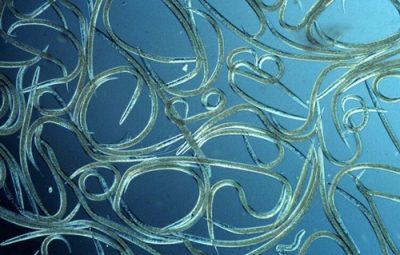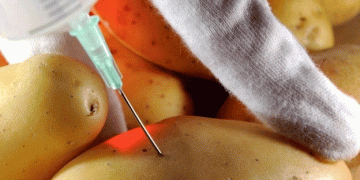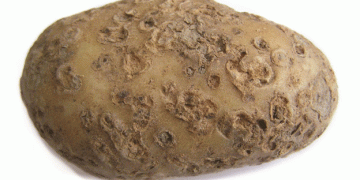Weed pressure was low this year and damage from nematodes was not too bad. Next year, the roles may be reversed again, and then it is important to take a good look at the nematode problem. The time of year has come to reflect on the past season. 2021 Will go down in the books as a cold and extremely wet spring. The bad conditions prevented the crops from growing. In combination with a high pressure of soil insects, this has created many challenges. However, the bad spring has not only caused problems.
Prevent nuisance from nematodes

Infestation and nuisance from harmful nematodes , such as free-living, root knot and root lesion nematodes , cause growth inhibition and loss of quality when pressure is too high in arable crops. Nematodes puncture the roots and tubers of the plant, causing lesions or deformities. This leads to rejection and loss of yield of the product.
With a high infestation of nematode, it is difficult to restore the balance in the soil. A grower can use various preventive measures for this. These measures can consist of choosing the right green manure, choosing a variety and applying a preventive product such as Nemater® . However, in order not to make unnecessary wrong choices, it is important to have a soil sample taken from the plot first. After analyzing you know exactly which and how many harmful nematodes are present in the soil.
Measuring is knowing
The timing of taking a soil sample is important to get an accurate picture of the nematode pressure. The ideal time after cultivation is between November and February. Most nematode are then found in the top layer of the soil and in the remaining crop residues. If you do the measurement during the growing season, it may be that some of the nematodes are not present in the soil surface.
Importance of green manures
Sowing green manures as catch crops can be an important link in controlling nematodes. For example, it is known that root lesion nematode become less active when pricking Tagetes. Because the nematode punctures the endodermis of the plant, substances are released that ensure that the root lesion nematode dies. Fodder radish in turn ensures that the population of root knot nematodes decreases.
At the same time, a wrong choice can have the opposite effect. The root knot nematodes M. fallax and the root lesion nematode P. penetrans multiply strongly on Facelia and Japanese oats reproduce M. chitwoodi. Choosing the right green manure mix is very important so as not to run into disappointment. A good analysis of a soil sample can help with this choice.
‘Start preventively with Nemater® to increase the plant’s resilience’

Restoring balance in the soil with Nemater ®
It is no longer possible to sow a green manure at this time. Other measures will therefore have to be considered for the cultivation of the coming season. The well-known falls from last season will become bigger every year with wrong decisions. As a grower, you can respond to this by treating those plots preventively with the Nemater® product.
Nemater® contains a mix of herbs that support the plant to become resistant to damage by, among other things, free-living nematodes, root knot and root lesion nematodes. By applying Nemater® preventively in the spring during sowing or planting, you support the development of the natural recovery capacity and the resistance to abiotic stress of the crops. As a result, nuisance and damage caused by nematodes can be indirectly prevented and can be controlled.
Advice spring
-Nemater® granulate 30 kg/ha during sowing.
-2x Nemater® liquid 10 l / ha after emergence, interval of 14 days.
– Applying before rain or raining in after spraying ensures an optimal effect.







